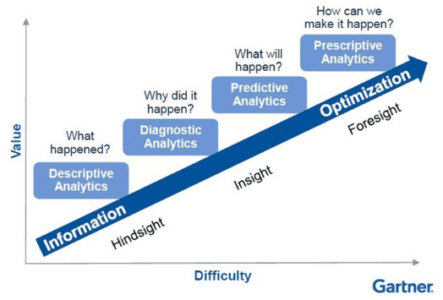Using Data Analytics to Drive Your Business
Written by: Alan Baxter
There have been countless articles written about Big Data. In fact, I don’t believe a day has gone by where I haven’t seen someone’s perspective on Big Data and how it’s going to “change the world” as we know it today. But do you ever feel like this emphasis on Big Data is like walking into a movie in the middle, being heightened by its climax, yet lacking a true foundational understanding of the plot?
The purpose of this, is to do exactly that. I’m going to break down the fundamentals Big Data analytics into an article you can read in under 3 minutes.
Simply put, information is the foundation for how decisions are made in today’s business. As a matter of fact, it has been the foundation for how decisions have been made for years. However, in the past it was only the elite organizations that could get on the forefront of their data and use it to drive the business. In 2016, it’s a whole new ballgame; from a technology trend standpoint, there is nothing bigger than Big Data.
In fact, with the highly anticipated migration to the IoT (Internet of Things), the advancement of data collection and data manipulation tools, and the influx of self-service BI software, we are continually becoming more and more advanced in our analytical capabilities. Readily available technology solutions have provided the means to turn millions of lines of unstructured data into real, business driven results quicker and more accurately than ever before. Today’s most successful business at all sizes are learning to master their Big Data capabilities. Big Data driven businesses can be intrusive in industries like hospitality, where Airbnb ($30B) is worth about 30 percent more than the world’s biggest hotel company, Hilton. How does your business address Big Data?
Through proven methodology and highly experienced consultants, TSI covers the spectrum, helping organizations uncover analytics solutions using the fun damental combination of:
damental combination of:
- Prescriptive: Prescriptive analytics is one of the most powerful analytics methods. Yet, according to Gartner only 3% of businesses use this method
(while 13% of businesses use predictive analytics). Prescriptive analytics reveals suggestions/recommendations based on collected data, indicating what actions should be For example, Manufacturing Company XYZ has been experiencing monthly fluctuations in its bottom-line and suspects it has to do with raw material price volatility from various vendors. Prescriptive analytics will help the company identify raw materials with the highest volatility and provide various suggestions/recommendations; e.g., the most cost effective month to buy, best vendors to use with least price volatility, etc.
- Predictive: More common that prescriptive, predictive analytics provides analysis (or forecasts) of likely scenarios of what might happen based on historical data. For example, predictive analytics can be used with CRM data throughout the lead to sale-execution process of an organization. This analysis provides the ability to predict the probability of a lead turning into a sales order based on a vast array of data points captured in the CRM.
- Diagnostic: Diagnostic analytics involves looking at past performance (data sets) and determining what happened and why. Deliverables usually consist of metrics presented in a dashboard fashion. For example, Retail Company ABC released a large internet marketing campaign last month that increased sales by 20% from the previous month. The company can use diagnostic analytics to present the campaigns success factors by analyzing data points; e.g., # of clicks, time on the page, # of shares, etc.
- Descriptive: Descriptive analytics is most commonly used to provide real-time analysis based on real-time data. For example, major hotel chains use descriptive analytics to understand a particular sites guest room availability in real-time.
It’s time to take action and get ahead of the curve when it comes to Big Data and Data Analytics. TSI can help with the following:
- Assess where your organization truly is and see what immediate improvements might be close at hand
- Define your short and long term data analytics needs (and define what business case is associated with this)
- Suggest and implement data analytics solutions that will move you from a descriptive to a prescriptive organization.
As per all of our engagements, TSI’s knowledgeable and personable consultants will not only collaboratively define what actions need to take place, but they’ll help your organization understand “Why?” while guiding you through the finish line. Please contact TSI to get started on your project or to brainstorm ideas with one of TSI’s experienced consultants.
